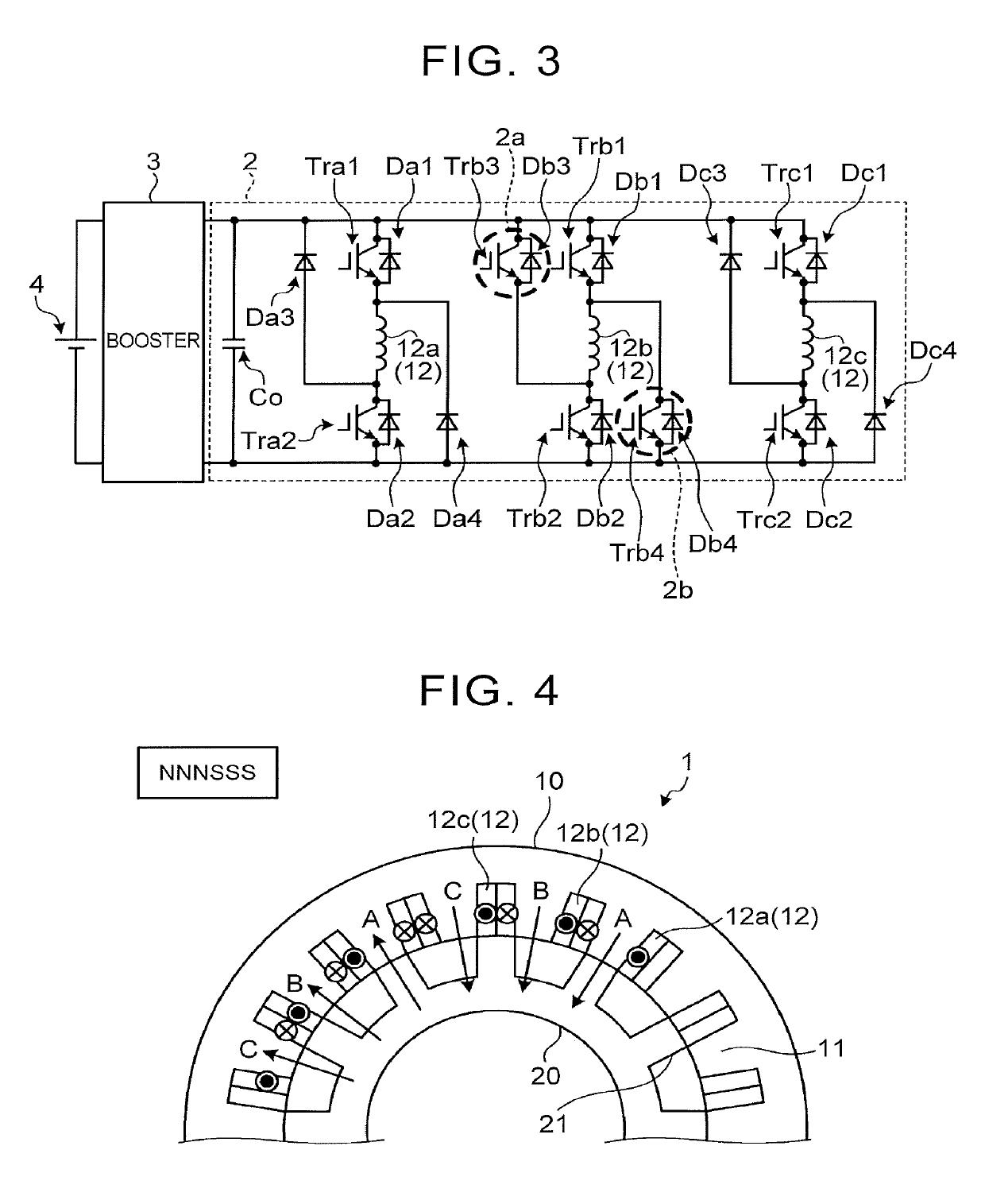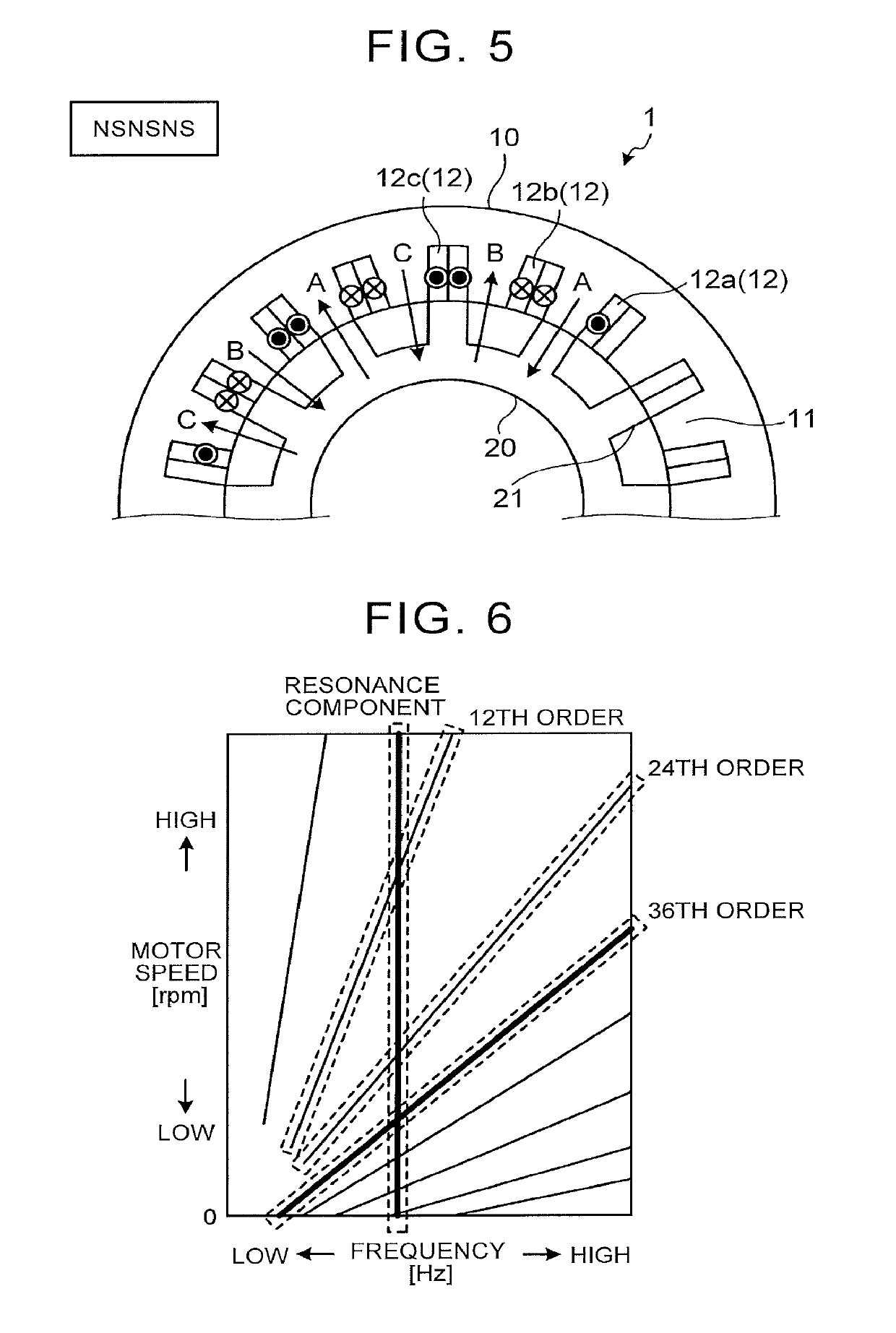Switched reluctance motor system, and method of controlling switched reluctance motor system
a technology of switched reluctance and motor system, which is applied in the direction of control system, synchronous motor, electrical apparatus, etc., can solve problems such as efficiency degradation, and achieve the effect of reducing vibration and noise, without deteriorating the efficiency of the switched reluctance motor
- Summary
- Abstract
- Description
- Claims
- Application Information
AI Technical Summary
Benefits of technology
Problems solved by technology
Method used
Image
Examples
first embodiment
[0098]As described above, occurrence of resonance at a specific order is taken into consideration; therefore, when the SR motor 1 is driven in the NSNSNS pole configuration pattern, vibration and noise at the specific order can be reduced. More specifically, as the specific order, the least common multiple of the number of stator poles and the number of rotor poles, or an integral multiple of the product of the number of rotor poles and the number of coil phases is used. Then, when the pole configuration pattern is NSNSNS, excitation control is performed based on excitation conditions that are different for the respective phases, from the relationship between the excitation sound frequency at the specific order and the resonance frequency, so that the vibration and the noise can be reduced.
[0099]In the current waveform control as the noise reduction control, the excitation conditions are changed while the NSNSNS windings are maintained; thus, it is not necessary to switch the windi...
second embodiment
[0127]More specifically, in the inverter 2C of the second embodiment, a phase-A circuit includes two transistors Tra1, Tra2, and four diodes Da1, Da2, Da3, Da4, and a phase-B circuit includes two transistors Trb1, Trb2, and four diodes Db1, Db2, Db3, Db4, while a phase-C circuit incudes two transistors Trc1, Trc2, and four diodes Dc1, Dc2, Dc3, Dc4.
[0128]The current waveform control of the second embodiment can be performed according to the control flow shown in FIG. 11 as described above. In the second embodiment, step S2, step S8, and step S9 shown in FIG. 11 are eliminated. More specifically, after execution of step S1, the electronic control unit 100 proceeds to step S3. In the second embodiment, step S3 through step S7 subsequent to step S1 are executed in the same manner as those in the first embodiment. Thus, the control system of the second embodiment does not perform switching control of the pole configuration pattern, but performs excitation control (normal excitation cont...
PUM
 Login to View More
Login to View More Abstract
Description
Claims
Application Information
 Login to View More
Login to View More - R&D
- Intellectual Property
- Life Sciences
- Materials
- Tech Scout
- Unparalleled Data Quality
- Higher Quality Content
- 60% Fewer Hallucinations
Browse by: Latest US Patents, China's latest patents, Technical Efficacy Thesaurus, Application Domain, Technology Topic, Popular Technical Reports.
© 2025 PatSnap. All rights reserved.Legal|Privacy policy|Modern Slavery Act Transparency Statement|Sitemap|About US| Contact US: help@patsnap.com



